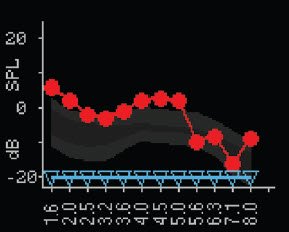Otoacoustic Emissions Basics
OAE Guides
What are Otoacoustic Emissions (OAE)?
Since the microphone measures the response at the entrance to the ear canal, rather than at the site of its origination (the cochlea), the anatomy along the return path (i.e., the ossicular chain and the tympanic membrane) can influence the amplitude of the response. To identify these effects, measure the status of the middle ear using tympanometry screening whenever possible.
This otoacoustic emission has a very small amplitude and gets mixed in with other biological and environmental sounds present in the ear canal. Since the probe microphone detects all of these sounds, the instrument must use signal averaging techniques to separate the emitted response — OAE — (signal) from these other sounds (noise).
The OAE probe, similar to a tympanometry probe, contains speakers and a microphone. Eartips cover the probe and seal the ear canal tightly. The probe speakers send sounds to the ear canal. These stimuli travel through the middle ear and into the cochlea. Outer hair cells in the cochlea react to the tones by generating emissions which travels outward from the cochlea back through the middle ear to the ear canal, where the probe microphone detects it.
How is an OAE Generated and Detected?
Otoacoustic emissions testing provides a fast, non-invasive method of testing for cochlear pathology. In addition, OAE testing is completely objective—making it ideal for hard-to-test patients such as infants, young children, or neurologically impaired patients.
Otoacoustic emissions (OAEs) are sounds generated within the cochlea of all normal-hearing ears by active biomechanical processes within the outer hair cells. Since normal ears produce OAEs, the absence of an emission is a reliable sign of abnormal cochlear function, which could indicate hearing loss.
Distortion Product Otoacoustic Emissions (DPOAE)
Otoacoustic emissions are low level audio-frequency sounds that are produced by the cochlea as part of the normal-hearing process. Distortion product otoacoustic emissions are acoustic signals that can be detected in the ear canal of a person with normal outer hair cell function, by stimulation of the auditory system with a pair of pure tones at frequencies (f1 and f2).

The resulting emission of interest is the distortion product tone at the frequency 2f1-f2. The instrument generates a series of test tones, directs them into the ear canal, and then measures the level of the DPOAE tone generated by the cochlea. By using different test frequencies, the device provides an estimate of outer hair cell function over a wide range of frequencies.
Transient Evoked Otoacoustic Emissions (TEOAE)
Transient evoked otoacoustic emissions are acoustic signals that can be detected in the ear canal of a person with normal outer hair cell function, by stimulation of the auditory system with a series of wideband clicks.

The instrument generates a series of clicks, directs them into the ear canal, and then analyzes the spectrum of the returning signal, separating the noise and emission. By using band pass filters, the device provides an estimate of outer hair cell function over a wide range of frequencies.